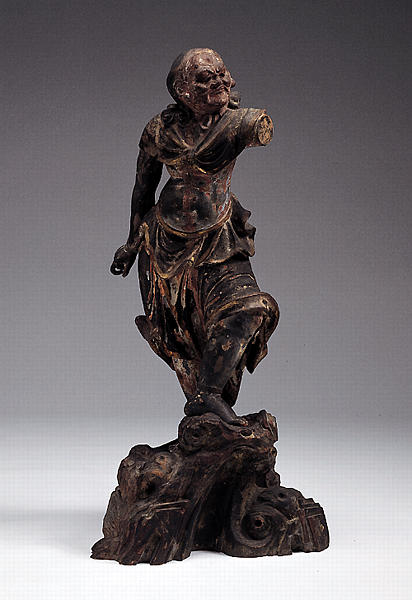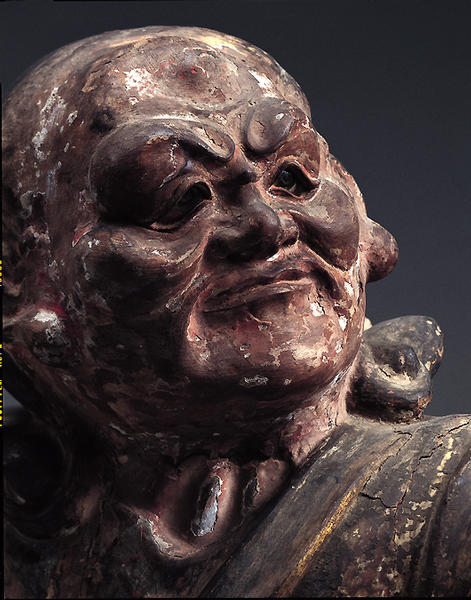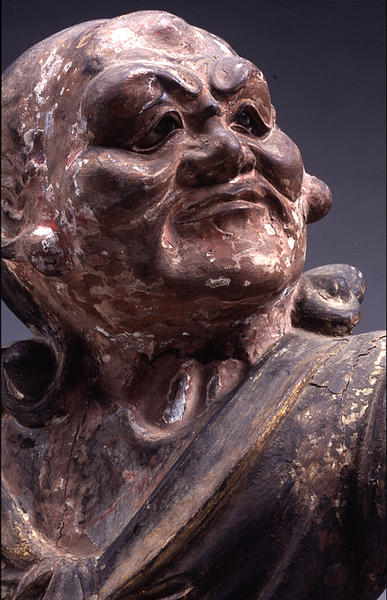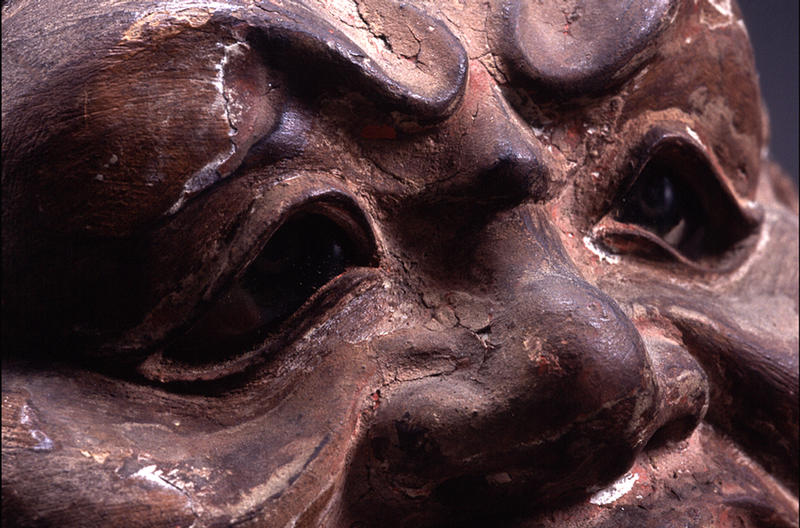童子立像
- 室町時代
- 15c
- 寄木造(桧)彩色
- H-76.8
室町時代 15世紀
木造彩色
像高:76.8cm
地蔵菩薩の眷属(従者)として配されることのある掌善・掌悪二童子のうちの掌善童子と伝えられるが,肩巾をかけ,右手を下げて持物(欠失)を執り,左手は欠失するものの,胸のあたりに手先をもっていったとすれば,不動明王の眷属の一人である制多迦童子像の可能性もある。しかし,不動明王の眷属の場合は子供の風貌であるはずのところ本像は明らかに老人の顔つきなので,地蔵菩薩眷属の図像が不明確なままではあるが,掌善童子とみた方がよいのかもしれない。
ヒノキを材とした寄木造。体部の正中で左右二材を寄せるが,頚部下で割り放つこと(割首)はない。内刳りを入れ,目には水晶製のものを嵌めて玉眼とする。彩色の仕上げとするが,ほとんど剥落している。
動きのある体勢や現実的な表情は,鎌倉時代的な写実性を感じさせるものの,ポーズはやや大仰となり,誇張された表情もうかがえることから,もう少し下って室町時代の作と推定される。(伊東)
Catalogue Entry
Muromachi period, 15th century
Assembled wood with polychrome
Figure height, 76.8cm
This figure has traditionally been considered an example of Shozen doji, one of the two doji attendants, Shozen and Shoaku, in Jizo's (Ksitigarbha) retinue. There is shoulder drapery and an object held in the right hand (now lost) while the now lost left hand is thought to have been held about chest height. Given these attri-butes, the figure also shows the characteristics of Seitaka doji, one of Fudo Myoo's (Acalanatha) attendants. However, Fudo Myoo's attendant is intended to be shown as a child, and as this figure clearly has the face of an older man, and as the iconography of Jizo's retinue remains unclarified, it is likely that this image should be considered to be Shozen doji.
Made of hinoki (Japanese cypress) in the yosegi zukuri technique, two pieces of wood are joined right to left in the middle of the body, but there is no split-and-join technique (warikubi, or split-neck technique) used at the base of the neck. The interior has been hollowed and crystal eyeballs inset in the eyes. The figure was finished in polychrome, but the majority of this polychrome has flaked away.
The movement-filled posture and realistic expression are indicative of the realism of the Kamakura period, but the relatively simplified form of the pose and the stiffened expression suggest a slightly later date from the Muromachi period. SI



